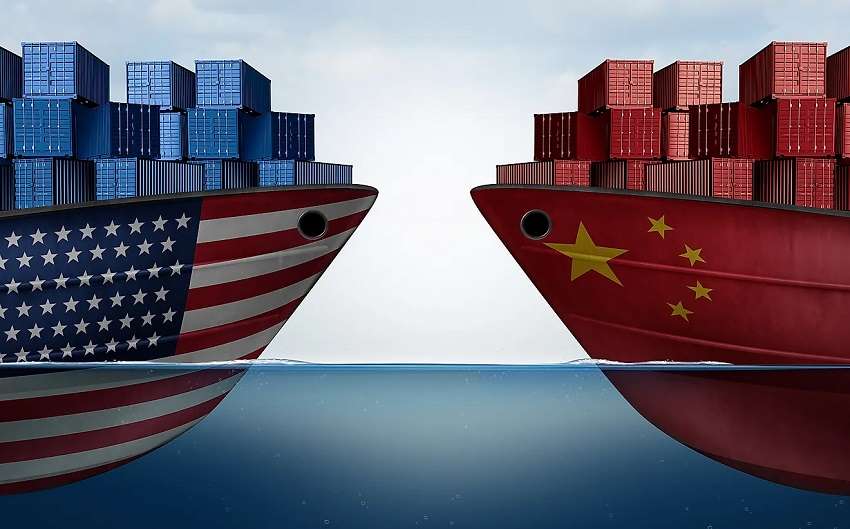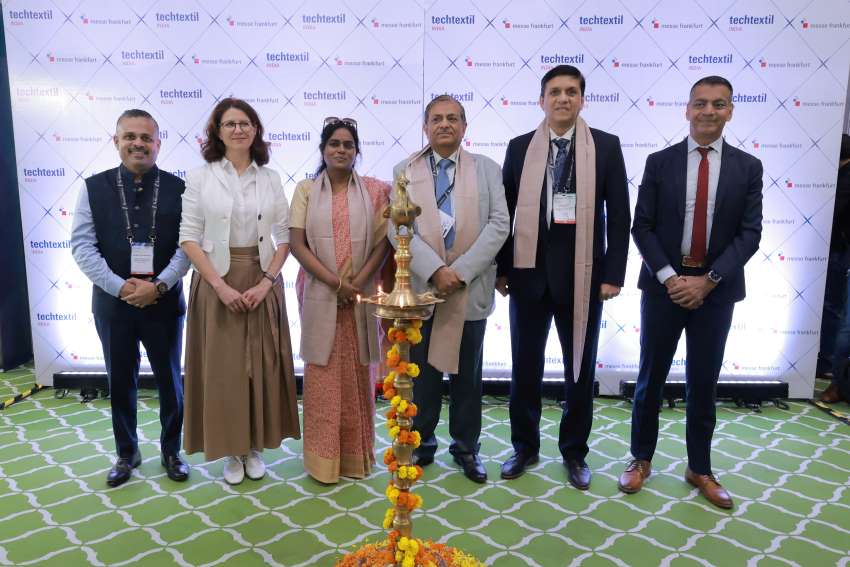
The recent escalation of reciprocal tariffs between the US and China has sent ripples through the global fashion, apparel, and textile industries, with Chinese manufacturers and consumers alike bracing for impact. While anxieties about reduced export volumes to the US are palpable, a rise in nationalistic sentiment and a shift towards domestic consumption are reshaping the landscape.
A nation united, yet wary
Social media platforms like Weibo and WeChat are filled with discussions regarding the trade tensions. While overt anti-American rhetoric remains moderated, a strong sense of national pride and a determination to bolster domestic industries are evident. "We must rely on ourselves," echoed a post on Weibo, garnering thousands of likes. "Our strength lies in our ability to adapt and innovate."
However, trade bodies like the China National Textile and Apparel Council (CNTAC) have expressed concerns over the long-term implications. "The impact on export-oriented enterprises, especially SMEs, will be significant," a CNTAC spokesperson noted in a recent press conference, citing potential job losses and reduced profit margins. "We are urging the government to provide targeted support," said a CNTAC official press release.
A report from the China Chamber of Commerce for Import and Export of Textiles (CCCT) estimates that the new tariffs could result in a 10-15 per cent decrease in Chinese textile exports to the US within the next 12 months. A survey conducted by a Chinese market research firm, iResearch ‘iResearch Consumer Sentiment Report, 2024’, indicated that while 65 per cent respondents felt a sense of "patriotic duty" to support domestic brands, 40 per cent expressed concerns about potential price increases due to the tariffs. Furthermore, 25 per cent of surveyed individuals stated they would actively seek out non-US brands for apparel and textiles.
Reworking the silk road
To mitigate the risks associated with US tariffs, Chinese textile and apparel manufacturers are actively diversifying their supply chains. This includes
Expanding production in Southeast Asia: Vietnam, Cambodia, and Bangladesh are emerging as attractive alternatives, offering lower labor costs and preferential trade agreements with other markets.
Accelerating automation and technological upgrades: Investments in advanced machinery, robotics, and AI-powered production systems are aimed at enhancing efficiency and reducing reliance on manual labor.
Building robust domestic supply networks: Strengthening partnerships with domestic suppliers and logistics providers to ensure a more resilient and self-reliant supply chain.
A case study of a major textile manufacturer, Youngor Group, in Guangdong province revealed a planned investment of $50 million in automation upgrades over the next two years, with a focus on smart warehousing and robotic assembly lines. They are also establishing new production lines within Vietnam.
According to the Ministry of Industry and Information Technology (MIIT), China's investment in textile-related automation technologies grew by 20 per cent year-over-year in the first quarter of 2024. (Source: MIIT Industry Report, 2024).
The dragon's appetite
China's vast and burgeoning domestic market is seen as a crucial buffer against the impact of US tariffs. The government is actively promoting domestic consumption through various initiatives, including
· "Dual Circulation" strategy: Emphasizing the importance of both domestic and international economic cycles, with a focus on boosting internal demand.
- E-commerce expansion: Leveraging the power of online platforms like Alibaba and JD.com to connect domestic manufacturers with consumers.
- Promoting "Guochao" (national trend) brands: Encouraging the consumption of domestically produced goods that incorporate traditional Chinese cultural elements.
Data from the National Bureau of Statistics shows that retail sales of clothing, footwear, and textiles in China grew by 8.5 per cent in the first quarter of 2024, indicating strong domestic demand. Furthermore, online retail sales of apparel increased by 12 per cent in the same period, highlighting the importance of e-commerce.
Table: Domestic consumption growth
|
Quarter |
Year |
Growth Rate (Clothing, Footwear & Textiles) |
Online Apparel Sales Growth |
|
Q1 |
2024 |
8.50% |
12% |
|
Q4 |
2023 |
7.20% |
9.80% |
|
Q3 |
2023 |
6.80% |
8.50% |
Global brands in the crossfire
Global fashion brands that rely heavily on Chinese manufacturing for their US-bound exports are facing significant challenges. The fear of drastic reduction of buying from China is real. However, the situation is more complex when considering the sales of these same brands within China.
Brands with large-scale production in China for US markets are actively exploring alternative sourcing options. Meanwhile the growing Chinese middle class and their increasing appetite for luxury and international brands represent a significant opportunity. However, brands must carefully navigate the complex interplay of national pride and consumer preferences in China.
For example, a major European sportswear brand, Adidas, while facing potential export disruptions, reported a 15 per cent increase in online sales in China during a recent promotional campaign on Tmall.
Meanwhile, American clothing brand with factories in China are actively diversifying manufacturing to Vietnam and Bangladesh, but cannot ignore the immense market potential within China itself. It's a delicate balancing act for them.
The situation requires global brands to create a delicate balance of maintaining their export supply lines while also capitalizing on the growing domestic market within China. The future of the fashion industry will heavily depend on how efficiently these brands navigate the complexities of this evolving trade landscape.
The fact that many global brands not only sell within China but also source significant portions of their global production from Chinese factories creates an additional layer of complexity. These brands are now facing the challenge of potentially increased production costs due to tariffs, which could impact their profit margins worldwide. Simultaneously, they must navigate the delicate political climate within China, where any perceived shift away from Chinese sourcing could trigger consumer backlash.
A recent analysis by a financial consulting firm highlighted that brands with over 30 per cent of their global sourcing originating from China face the highest risk of supply chain disruption and increased costs. This scenario forces brands to reassess their sourcing strategies, potentially accelerating diversification efforts, but also necessitating careful communication and brand management within the Chinese market.












